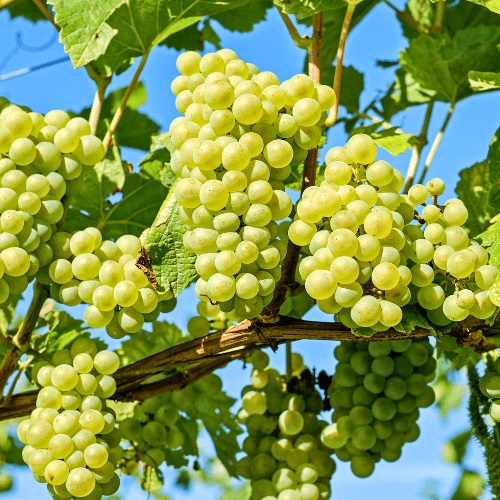Turkish Grapes
Sultaniye / Sultana
(Thomson Seedless)

Sultana Flavors
Lemon |
Apple |
Pear |
Grapefruit |
Jasmine |
Grass |
Asparagus |
Wet Stone |
The Sultaniye Grape
Sultaniye grapes are consumed as table grapes and raisins, but also used in winemaking.
Sultaniye wines are dry and semi-dry, light-bodied wines. Grapes used for winemaking are mainly grown at Denizli and Manisa in the Aegean Region.
The Semillon and Sultaniye wines from the Marmara Region of Turkey attract attention not only in the local market but also in international markets.
Sultaniye is one of Turkey’s most widely grown white wine grapes, known for its fresh, fruity, and easy-drinking wines. It is primarily used for table grapes and raisins, but it also produces light, crisp white wines that are perfect for warm-weather drinking.
Sultaniye is mainly cultivated in western Turkey, particularly in the Denizli and Manisa regions of the Aegean. The region’s Mediterranean climate (hot, dry summers and mild winters) helps develop the grape’s natural sweetness and fruity aromas.
Wines made from Sultaniye are typically light-bodied, with bright acidity and fresh fruit flavors. They are often made in a dry or off-dry style and rarely aged in oak to preserve their pure, fruity character.
Sultaniye wines are known for being refreshing, easy to drink, and best enjoyed young.
Young & Fresh Style: Crisp acidity, citrus and floral notes (best consumed within 1–2 years).
Off-Dry Style: Slightly sweet with tropical fruit flavors (similar to a light Riesling or Moscato).
Blended Wines: Sometimes blended with Narince or Chardonnay for more complexity.
Sultaniye is a refreshing and easygoing white grape, producing wines that are light, fruity, and perfect for summer drinking. If you enjoy Sauvignon Blanc, Pinot Grigio, or Albariño, you will likely appreciate Sultaniye wines.